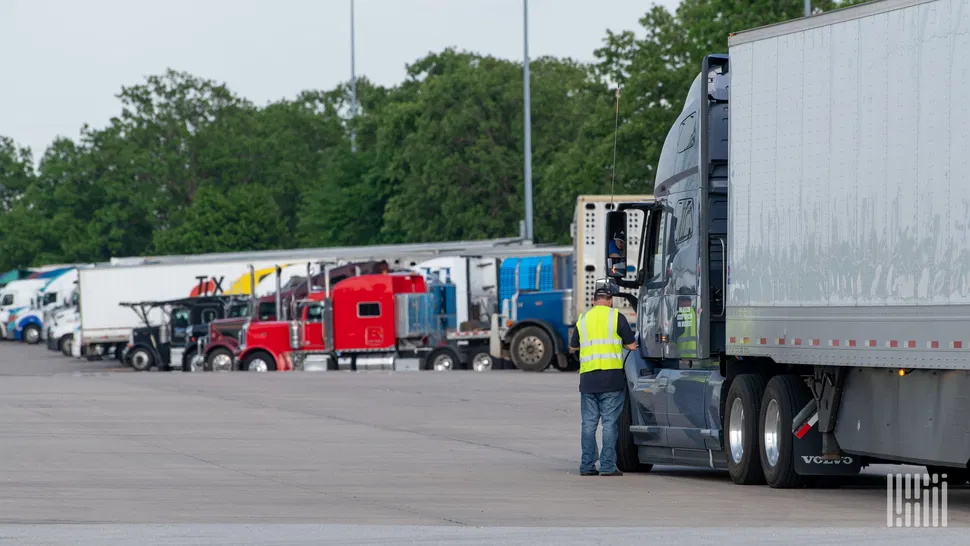Unpacking the Driver Shortage Dilemma
For years, the conversation surrounding the number of drivers in the transportation sector has been vigorous and multifaceted. Across the board, various stakeholders—from associations to individual drivers—hold contrasting views about whether a genuine driver shortage exists or if the issue lies elsewhere. The narrative doesn’t merely rely on statistics; it encompasses deeper industry dynamics that collectively paint a picture far more complex than a straightforward shortage or surplus.
Instead of strictly categorizing the issue, it’s worth exploring the notion that a crisis of mismatch might be at play. Rather than a typical labor issue, we’re grappling with a communication problem—where different parties shout across an abyss of understanding, missing the bigger picture.
The Claim for Conclusive Driver Shortage
The voices claiming a driver shortage are certainly grounded in observable trends:
- Job advertisements: If advertisements for high-paying driver positions yield no responses, this raises eyebrows regarding the existence of enough willing labor in the market.
The pressing issue here is whether companies are compensating drivers fairly for their skills or merely trying to keep them quiet with monetary incentives. When drivers are motivated enough to leave, it speaks volumes about underlying respect and value.
Rethinking Compensation Structures
The trucking industry faces a dual challenge: it seeks not just to increase pay, but to align compensation with expectations and improve overall quality of life for drivers. Merely increasing cents per mile without validating driver contributions won’t bring about the change needed.
Drivers depart when they feel undervalued or disrespected—often, it’s a mix of both that prompts their exodus.
Addressing the Core Issue
Instead of asking whether it’s about having enough drivers, a more pressing inquiry might be about whether the right drivers are in place under viable business models.
This is where discomfort sets in for both camps:
- Companies with outdated fleets that lack modern recruitment tactics will cry ‘shortage,’ while ignoring their unappealing work environments.
- Conversely, economists may deny a shortage, yet overlook that many specialized carriers have aging operators with minimal replacements.
The layers of regulation seem only to add complexity without addressing the heart of the issue—adaptability and evolution of the trucking job itself.
Understanding Turnover Rates
Now, let’s pivot to turnover—the often-dismissed elephant in the room. High turnover might suggest a labor surplus, yet it raises serious red flags regarding retention and respect. If a company sees a steady stream of drivers exiting, it challenges the narrative that enough drivers are present.
High turnover leads to problematic onboard training processes and creates barriers to effective operation, further masking any actual abundance of qualified CDL license holders.
Distinguishing Driver Types
A common misconception is equating driver availability with actual carrying capacity. Consider a driver with their own authority versus company drivers; they have distinct career goals and cost structures, leading to a skewed view of the workforce.
As the industry evolves, we see a rise in lease operators and independent drivers who may not fit conventional employment criteria but still play a vital role within the system.
Is It Really a Driver Shortage or a Rejection?
Let’s take this conversation a step deeper. What if the industry is less about a shortage and more about the unwillingness of individuals to accept traditional roles?
As more drivers opt for independent opportunities, which afford them flexibility and earning potential, the traditional company model may find itself at odds with new worker values. Younger generations demand flexibility and work-life balance, often steering clear of roles that compromise these ideals.
This reflects a dissonance between supply and demand—not necessarily a numerical crisis, but an erosion of trust and value within the profession.
The Verdict on Our Current Landscape
The question of whether we’re dealing with a driver shortage isn’t black and white. It depends greatly on individual perspectives and how well companies adapt to the changing landscape.
If fleets prioritize modern vehicles, employee-centric culture, consistent pay, and respect for off-duty time, it’s likely they will attract and retain talent. Meanwhile, outdated structures with rigid treatment may struggle to fill positions.
Ultimately, the critical question each employer should ask themselves is: Would they want to work for their company? Until this question is addressed positively, blame will only shift towards the drivers, while the real problem exists in leadership practices.
Concluzie
In reviewing the tension surrounding driver availability, it becomes clear that the industry faces significant challenges and evolving expectations. While the discourse may swirl around the driver shortage, it is, in truth, laden with deeper issues of communication and value alignment.
Platforms like GetTransport.com play a significant role in mitigating these challenges by providing reliable, affordable solutions for cargo and transport needs. With services tailored for various relocation and shipping demands, GetTransport.com stands as a beacon of efficiency in logistics. Orders can be placed with ease for everything from office moves to bulky furniture delivery, facilitating seamless transportation.
In the ever-shifting landscape of logistics, understanding these dynamics can provide a clearer path forward. Acknowledging diverse perspectives, GetTransport.com not only simplifies but also enhances the experience as it adapts to new industry norms. Book your next cargo transportation with GetTransport.com!

 Înțelegerea dezbaterii privind aprovizionarea cu șoferi în logistica transporturilor">
Înțelegerea dezbaterii privind aprovizionarea cu șoferi în logistica transporturilor">